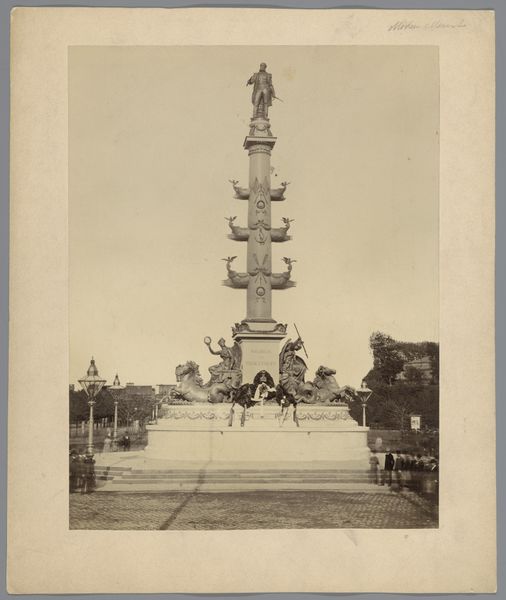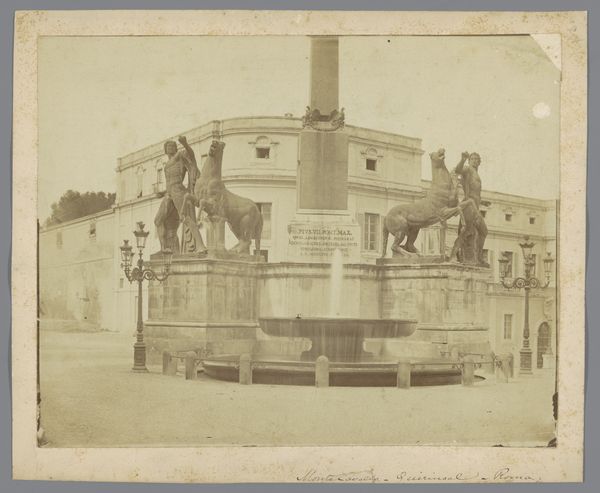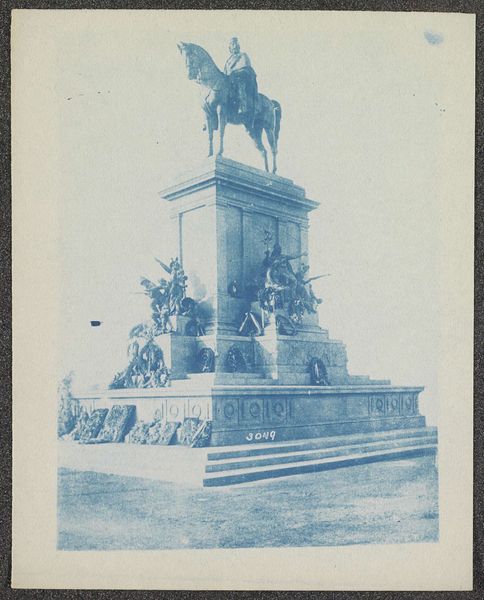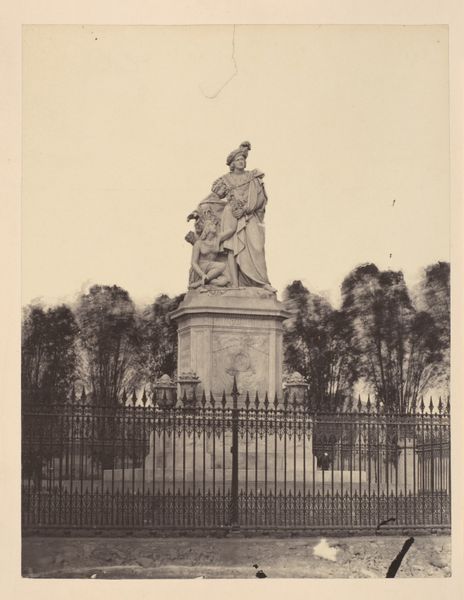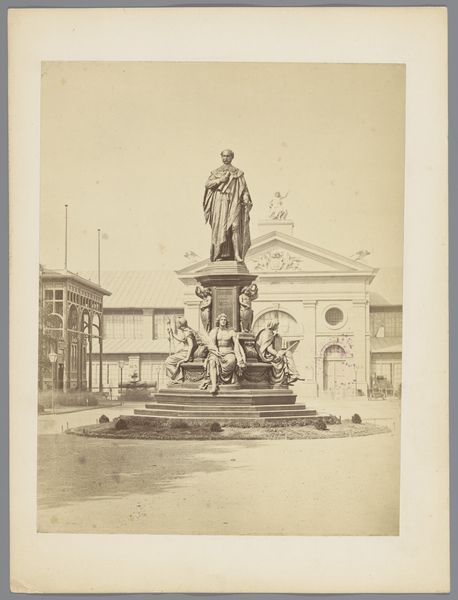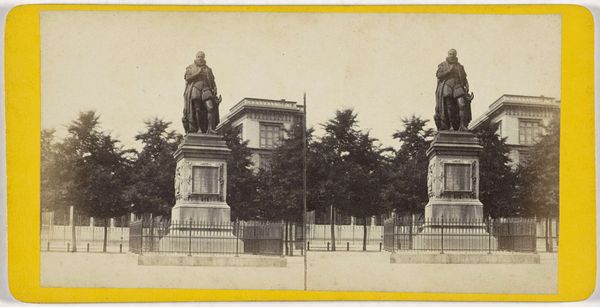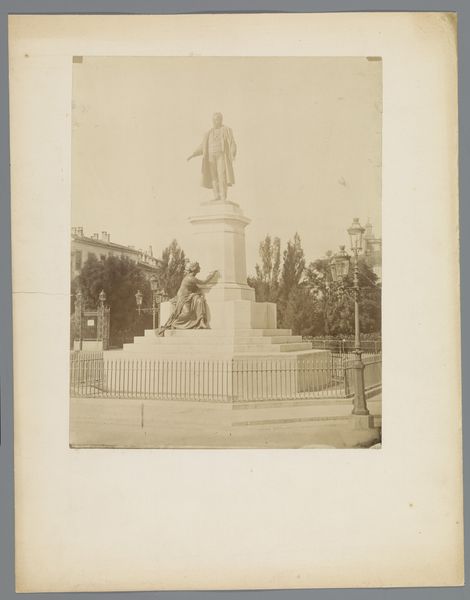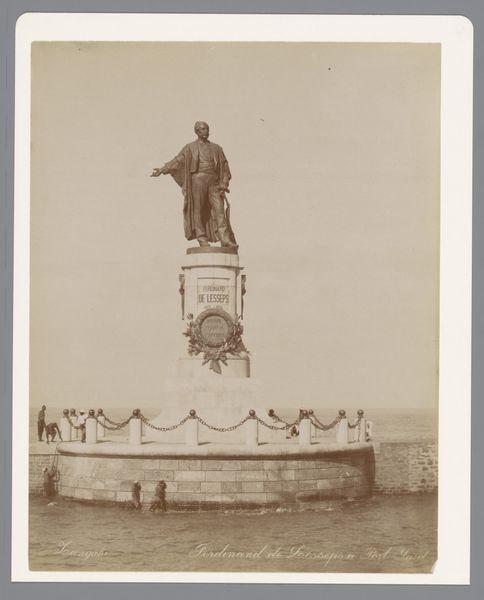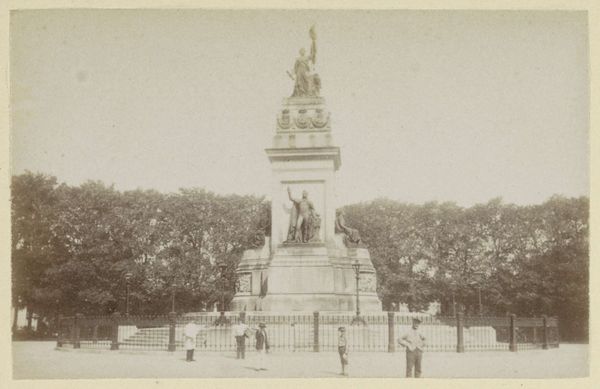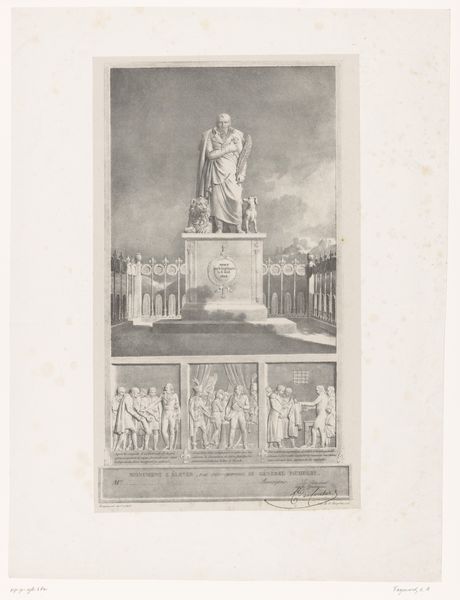
Dimensions: height 235 mm, width 295 mm
Copyright: Rijks Museum: Open Domain
This photograph documents the Monument to Martin Luther in Worms, Germany. It was made using a photographic process, likely albumen printing, which involves coating paper with egg whites, and then light-sensitive silver nitrate, before being exposed to a negative in sunlight. The monument itself is a massive stone and bronze structure. The creation of such a monument required extensive quarrying, stone cutting, bronze casting, and assembly, all extremely labor-intensive processes. These tasks would have been divided among many skilled and unskilled workers, reflecting the social hierarchies of the time. The monument's design incorporates several figures and intricate details, indicating a high level of craftsmanship and artistic skill. The materials and processes emphasize the monument's weight, permanence, and status, serving as a potent symbol of religious and political power. Understanding the monument through the lens of its making reveals a complex interplay of materials, labor, and cultural values, challenging the traditional separation between fine art and the wider world of production.
Comments
No comments
Be the first to comment and join the conversation on the ultimate creative platform.
